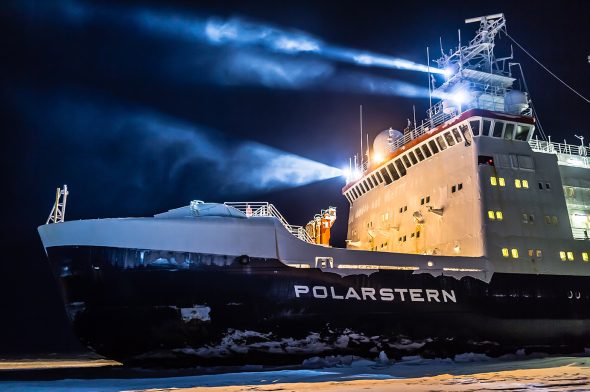Adrift in the icy Arctic Sea. The adventurous mission of the ice breaker Polarstern
A ship full of scientists is trying to reach the North Pole to study climate change

Adrift in the icy Arctic Sea. The adventurous mission of the ice breaker Polarstern
A ship full of scientists is trying to reach the North Pole to study climate change
A ship full of scientists trapped for a year is the ice of the Arctic. It seems like the plot of a Jules Verne novel, but this is a true story. This is the adventure that the Polarstern is getting ready to face: an ice breaker 118 metres in length, launched in 1982 and flying a German flag. At the time of writing, it is allowing itself to go adrift above the 85th northern parallel, letting itself be carried by the wild ocean currents towards the Arctic.
There is no engine damage. This is a scientific mission aimed at studying and documenting the effects on climate change in the no longer “eternal” – as they were once called – ice of the North Pole. The Polarstern is not just a simple ship, but a sort of “city of science”, as it was defined by Focus, charged with completing mission Mosaic. Acronym which stands for “Multidisciplinary drifting Observatory for the Study of Arctic Climate”.
“The Arctic is in the epicentre of global warming. Yet what is happening at these extreme latitudes, especially in the winter, is still unknown to us. The aim of our mission is to shed light on the profound and fast changes happening in these seas and that will have profound repercussions on the entire planet”. This is how the marine biologist, Antje Boetius summed up, in an interview with the Corriere della Sera, the objectives of mission Mosaic.
Antje Boetius is the director of the famous Awi, the institute for marine and polar research dedicated to the great geologist Alfred Wegener, the man who created the theory of continental drift. The Wegener Institute is the owner of the Polarstern and promoter of this scientific mission that will involve over 600 scientists, including two Italian physicists, belong to research institutes and universities from around the world. Because nothing is as global as climate change.
The ice breaker, Polarstern left from the port of Tromsø, in Norway, which, from the times of Roald Amundsen, is the traditional port for expeditions heading to the North Pole. The scientists chose a Friday, the 20 of September, as a departure date to show their support for the global strike called for by Fridays for Future, which has mobilized boys and girls from around the world.
The ship, it may be better to describe it as a “floating laboratory”, will allow itself to be transported by the arctic currents to the Siberian seas, to then allow itself to be frozen into the pack ice. Here, in the darkness of polar night, with temperatures around 45 degrees below zero, physicists, climatologists, glaciologists and marine biologists will collect samples of ice and micro fauna, and will take measurements and carry out experiments planned for the entire duration of the long Arctic winter.

Two scientists take measurements in front of the Polarstern, locked into the pack ice
They will not be alone, naturally. The expedition will be supported by three airplanes and four ice breakers that will travel between the Polarstern and the supporting bases located in the Svalbard islands and Greenland. All the researchers involved in Mosaic will take shifts. Only the head of the mission, the German, Markus Rex, will remain on board for the entire length of the mission: one year exactly. “We will remain above the 80th parallel the whole time – he says – pushing ourselves to 200 kilometres from the magnetic pole. Nobody, except for Fridtjof Nansen, has ever been able to push that far north in the middle of winter”.
A previous brave but less fortunate attempt is that cited by Rex. Between 1893 and 1896, the Norwegian explorer Fridtjof Nansen attempted to reach the North Pole by letting himself be transported by the currents, just like the Polarstern is doing now, but the impossible weather conditions forced him to give up and save himself, luckily, by using a sleigh pulled by dogs. Stories from another century. Many things have changed since then and the Polarstern has everything it needs to make this a success and become the ship that was able to get closest to the North Pole in the winter.
“Many things have changed since Nansen, certainly – concludes Markus Rex bitterly – but not just in technology. We can say with certainty that we will find much less ice than the Norwegian explorer did, unfortunately. And even higher temperatures”. This is not good news. As the boys and girls of Fridays For Future say: “Someone on our planet left the fridge door open”. Let’s hope we can close it before it is too late.
Topics: climate change, MOSAIC expedition, Polarstern



